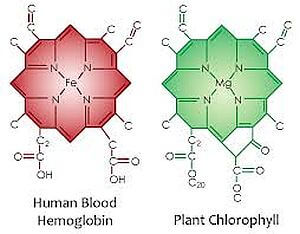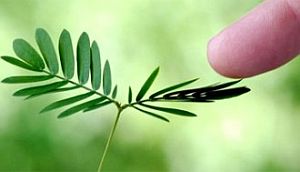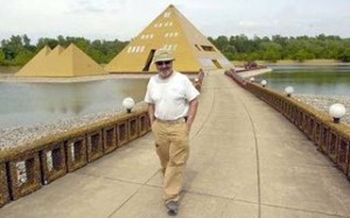Sayer Ji – What if conventional wisdom regarding our most fundamental energy requirements has been wrong all along and we can directly harness the energy of the Sun when we consume ‘plant blood’?
 Plants are amazing, aren’t they? They have no need to roam about hunting other creatures for food, because they figured out a way to capture the energy of the Sun directly through these little light-harvesting molecules known as chlorophyll; a molecule, incidentally, which bears uncanny resemblance to human blood because it is structurally identical to hemoglobin, other than it has a magnesium atom at its core and not iron as in red blooded animals.
Plants are amazing, aren’t they? They have no need to roam about hunting other creatures for food, because they figured out a way to capture the energy of the Sun directly through these little light-harvesting molecules known as chlorophyll; a molecule, incidentally, which bears uncanny resemblance to human blood because it is structurally identical to hemoglobin, other than it has a magnesium atom at its core and not iron as in red blooded animals.
The energy autonomy of plants makes them, of course, relatively peaceful and low maintenance when compared to animal life, the latter of which is always busying itself with acquiring its next meal, sometimes through violent and sometimes through more passive means. In fact, so different are these two classes of creatures that the first, plants, are known as autotrophs, i.e. they produce their own food, and the animals are heterotrophs, i.e. they depend on other creatures for food.
While generally these two zoological classifications are considered non-overlapping, important exceptions have been acknowledged. For instance, photoheterotrophs — a sort of hybrid between the autotroph and heterotroph — can use light for energy, but cannot use carbon dioxide like plants do as their sole carbon source, i.e. they have to ‘eat’ other things. Some classical examples of photoheterotrophs include green and purple non-sulfur bacteria, heliobacteria, and here’s where it gets interesting, a special kind of aphid that borrowed genes from fungi[1] to produce it’s own plant-like carotenoids which it uses to harness light energy to supplement its energy needs! Continue reading →

 “Everything is energy” is one of the main axioms of science, and human beings are no strangers to energy transformations.
“Everything is energy” is one of the main axioms of science, and human beings are no strangers to energy transformations. Sayer Ji – Modern science is only beginning to catch up to the wisdom of the ancients: plants possess sentience and a rudimentary form of intelligence.
Sayer Ji – Modern science is only beginning to catch up to the wisdom of the ancients: plants possess sentience and a rudimentary form of intelligence.
 Plants are amazing, aren’t they? They have no need to roam about hunting other creatures for food, because they figured out a way to capture the energy of the Sun directly through these little light-harvesting molecules known as chlorophyll; a molecule, incidentally, which bears uncanny resemblance to human blood because it is structurally identical to hemoglobin, other than it has a magnesium atom at its core and not iron as in red blooded animals.
Plants are amazing, aren’t they? They have no need to roam about hunting other creatures for food, because they figured out a way to capture the energy of the Sun directly through these little light-harvesting molecules known as chlorophyll; a molecule, incidentally, which bears uncanny resemblance to human blood because it is structurally identical to hemoglobin, other than it has a magnesium atom at its core and not iron as in red blooded animals.